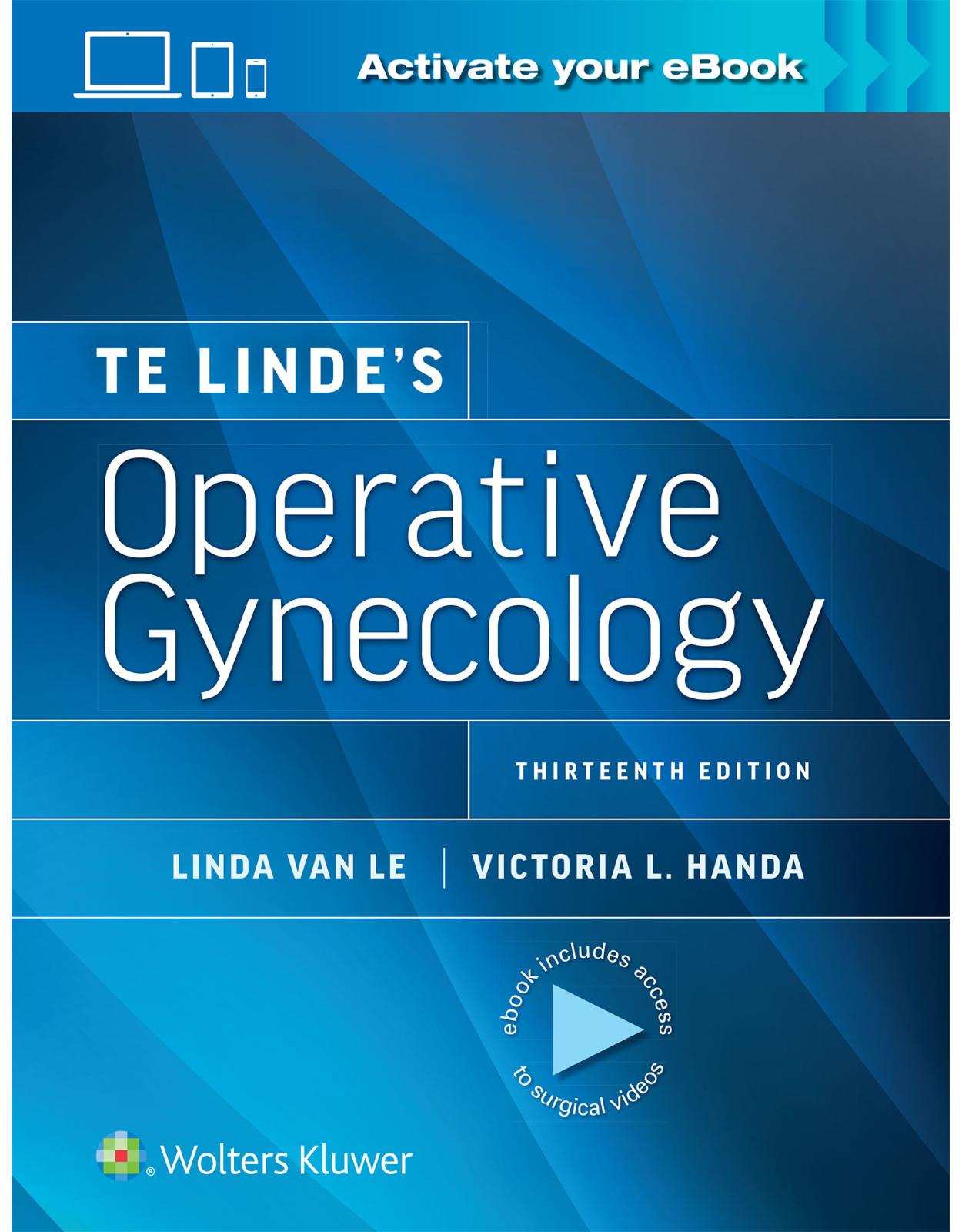
Te Linde’s Operative Gynecology
Livrare gratis la comenzi peste 500 RON. Pentru celelalte comenzi livrarea este 20 RON.
Disponibilitate: La comanda in aproximativ 4 saptamani
Editura: LWW
Limba: Engleza
Nr. pagini: 864
Coperta: Hardcover
Dimensiuni: 213 x 276 mm
An aparitie: 10 Jun 2023
Description:
With expert guidance on all aspects of gynecologic surgery, Te Linde’s Operative Gynecology, Thirteenth Edition, edited by Drs. Linda Van Le and Victoria L. Handa, remains your go-to-resource from preoperative to postoperative care. Comprehensive, step-by-step instructions on how to perform all contemporary gynecologic procedures, updated diagnostic and management approaches, a greatly expanded illustration program, and new procedural videos, edited by Dr. Danielle Patterson, make this classic text an ideal reference for trainees as well as experienced practitioners.
Table of Contents:
Section I: Preparing for Surgery
Chapter 1: Surgical Anatomy of the Female Pelvis
THE ABDOMINAL WALL
Skin and Subcutaneous Tissue
Musculoaponeurotic Layer
Neurovascular Supply of the Abdominal Wall
Other Lumbar Plexus Branches
VULVA AND ERECTILE STRUCTURES
Subcutaneous Tissues of the Vulva
Superficial Compartment
Pudendal Nerve and Vessels
Terminal Branches of Pudendal Nerve
Autonomic Innervation to Erectile Structures
Lymphatic Drainage
Medial Thigh Compartment
THE PELVIC FLOOR
Perineal Membrane
Perineal Body
Posterior Triangle: Ischioanal Fossa
Anal Sphincters
Levator Ani Muscles
PELVIC VISCERA
Genital Structures
Lower Urinary Tract
Sigmoid Colon and Rectum
PELVIC CONNECTIVE TISSUE
Uterine Ligaments
Vaginal Connective Tissue Attachments
Urethral Support
EXTRAPERITONEAL SURGICAL SPACES
Anterior and Posterior Cul-De-Sacs
Retropubic/Prevesical Space
Vesicovaginal and Vesicocervical Space
Rectovaginal Space
Region of the Sacrospinous Ligament and Greater Sciatic Foramen
RETROPERITONEAL SPACES AND LATERAL PELVIC WALL
Retroperitoneal Structures Above the Pelvic Brim
Presacral Space
Pelvic Retroperitoneal Space
Lymphatics
BIBLIOGRAPHY
Chapter 2: Preoperative Care of the Gynecologic Patient
ASSESSING PREOPERATIVE SURGICAL RISK
Patient Characteristics
Risk Scores
Procedure-Specific Risk Factors
PREOPERATIVE TESTING
Cardiac Testing
Chest X-ray
Complete Blood Count
Coagulation Testing (PT, aPTT, Platelet Count, INR)
Electrocardiogram
Electrolytes and Creatinine
Liver Function Tests
Pregnancy Test
Pulmonary Function Tests
Type and Screen or Cross
Repeating Recent Testing
PREOPERATIVE CONSIDERATIONS FOR COVID-19
MANAGING RISK FACTORS: PERIOPERATIVE STRATEGIES TO PREVENT SPECIFIC ADVERSE EVENTS
Major Adverse Cardiac Event
Infection
Venous Thromboprophylaxis
Bowel Preparation
Hemorrhage and Transfusion
Chronic Pain Patients
Management of Perioperative Anticoagulation
Management of Patients on Chronic Antiplatelet Therapy
MANAGEMENT OF CHRONIC MEDICATIONS IN THE PERIOPERATIVE PERIOD
Herbal and Dietary Supplements
ENHANCED RECOVERY AFTER SURGERY PROTOCOLS
USE OF TELEMEDICINE IN PREOPERATIVE CARE
BIBLIOGRAPHY
Section II: Basic Principles of Gynecologic Surgery
Chapter 3: Anesthesia Primer for the Gynecologist
BASIC ANESTHESIA CONCEPTS
Anesthesia Care Team
Standard Anesthesia Monitoring
The Continuum of Consciousness
PREOPERATIVE ASSESSMENT AND OPTIMIZATION
Risk Assessment
Airway Evaluation
Perioperative Fasting Guidelines
Anesthesia for High-Risk Patients
CONDUCT OF ANESTHESIA
Advanced Monitoring
General Anesthesia
Regional Anesthesia
FLUID MANAGEMENT AND BLOOD COMPONENT THERAPY
Perioperative Fluid Administration
Managing Blood Loss
SPECIAL CONSIDERATIONS FOR LAPAROSCOPIC OR ROBOTIC PROCEDURES
Positioning
Changes Related to CO2 Insufflation
Optimizing Ventilation for Laparoscopic and Robotic Surgery
Perioperative Complications
ENHANCED RECOVERY METHODS
BIBLIOGRAPHY
Chapter 4: Radiology Primer for the Gynecologist
ESSENTIALS OF IMAGING
Ultrasound
Computer Tomography
Magnetic Resonance Imaging
Positron Emission Tomography
Radiographs
GENERAL IMAGING IN GYNECOLOGY
IMAGING FOR DEVELOPMENTAL DISORDERS
IMAGING FOR ACUTE PELVIC PAIN AND ABNORMAL UTERINE BLEEDING
Cyst Rupture and Hemorrhagic Cysts
Ovarian Torsion and Tubal Torsion
Pelvic Inflammatory Disease and Tuboovarian Abscess
Endometrial Polyps
Endometriosis and Adenomyosis
IMAGING FINDINGS FOR COMMON BENIGN NEOPLASTIC DISEASE PROCESSES
Fibroids
Dermoid Cysts
IMAGING FINDINGS OF COMMON CYSTIC LESIONS OF LOWER GENITOURINARY TRACT
Urethral Diverticulum
Vulvar and Vaginal Cysts
IMAGING FINDINGS FOR GYNECOLOGIC CANCERS
Cervical Cancer
Endometrial and Uterine Cancers
Vaginal and Vulvar Cancer
Ovarian Cancer
O-RADS US AND O-RADS MRI CLASSIFICATION SYSTEM FOR ADNEXAL MASSES
Risk Stratification Based on Ultrasound
Risk Stratification Based on MRI
IMAGING FOR COMPLICATIONS OF PELVIC SURGERY
BIBLIOGRAPHY
Chapter 5: Patient Positioning for Pelvic Surgery
INCIDENCE OF NERVE INJURY
Lower Limb
Upper Limb
BASIC NEURAL ANATOMY AND RELATIONSHIP TO INJURY
Seddon’s Classification of Nerve Injury
Risk Factors
LOWER LIMB
Lumbosacral Plexus Anatomy
Proper Positioning to Prevent Nerve Injury
Clinical Implications and Management
UPPER LIMB
Brachial Plexus Anatomy
Proper Positioning to Prevent Nerve Image
Clinical Implications and Management
BIBLIOGRAPHY
Chapter 6: Surgical Techniques, Instruments, and Suture
SURGICAL INSTRUMENTS
Scalpels
Scissors
Tissue Forceps
Needle Drivers
Tissue Clamps
Other Clamps and Instruments
Cervical Dilators
Suction Devices
Stapling Devices
Mechanical Hemostatic Devices
Harmonic Scalpel
Handheld Retractors
Fixed Retractors
SUTURE
Natural Absorbable Sutures
Natural Permanent Sutures
Synthetic Sutures
Synthetic Permanent Sutures
Metal Sutures
Surgical Needles
Surgical Knots
SURGICAL TECHNIQUES
Dissection Techniques
Elevate and Incise
Push and Spread
Rubbing/Wiping
Hydrodissection
EXPLORATION OF PELVIC RETROPERITONEUM
Dissection of the Pelvic Brim and Pararectal Space
Ligation of the Internal Iliac (Hypogastric Artery Ligation) and Uterine Arteries
Dissection of the Presacral Space
Dissection of the Space of Retzius or Retropubic Space
Dissection of the Paravesical Space
Retained Surgical Instruments
BIBLIOGRAPHY
Chapter 7: Principles of Electrical and Laser Energy Applied to Gynecologic Surgery
HISTORY AND THE DEVELOPMENT OF ELECTROSURGERY
BASIC PRINCIPLES OF ELECTROSURGERY
ELECTROSURGICAL UNITS (GENERATORS)
Electrosurgical Unit Output
Dispersive Electrodes (“Return Pads”)
ELECTROSURGICAL CIRCUITS, WAVEFORMS, AND TISSUE EFFECTS
Monopolar vs Bipolar Circuits
Continuous vs Interrupted Waveforms
Tissue Effects
SAFETY CONCERNS WITH MONOPOLAR CIRCUITS
Open Activation
Direct Coupling
Insulation Failure
Capacitive Coupling
Active Electrode Monitoring
ARGON BEAM COAGULATOR
BIPOLAR INSTRUMENTS
First Generation
Second Generation
ELECTROSURGICAL APPLICATIONS IN OPERATIVE HYSTEROSCOPY
Monopolar
Bipolar
ULTRASONIC TECHNOLOGY
LASER TECHNOLOGY
Historical Perspective and Background
Principles of Laser Technology
Types and Applications of Lasers
Laser Safety
SPECIAL SURGICAL SITUATIONS
Pregnancy
Body Piercing and Prosthetic Implants
Implantable Devices
HAZARDS OF ELECTROSURGERY IN THE OPERATING ROOM
Fire Hazards
Surgical Plume
BIBLIOGRAPHY
Chapter 8: Incisions for Gynecologic Surgery
PHYSIOLOGY OF WOUND HEALING
Hemostasis
Inflammation
Proliferation
Remodeling
ABDOMINAL INCISIONS
Transverse Incisions
Vertical Incisions
INCISIONS FOR OBESE PATIENTS
Midline Incision for the Obese Patient
Panniculectomy and Abdominoplasty
PERINEOTOMY INCISIONS
Schuchardt Incision
CLOSURE OF VERTICAL INCISIONS
Use of Drains
Delayed Primary and Secondary Closure
Negative Pressure Wound Therapy
NECROTIZING SOFT TISSUE INFECTIONS
WOUND DEHISCENCE AND EVISCERATION
INCISIONAL HERNIA
BIBLIOGRAPHY
Chapter 9: Principles of Laparoscopy
PREPARATION FOR LAPAROSCOPY
Patient Selection and Contraindications
Operating Room Setup
LAPAROSCOPIC EQUIPMENT
Basic Equipment
Other Laparoscopic Tools
PERITONEAL ENTRY
Umbilical Entry
Palmer Point Entry
Alternative Entry Sites
INITIAL LAPAROSCOPIC ENTRY
Veress Needle Technique
Hasson Open Technique
Optical Direct Entry Technique
Preoperative Ultrasound Slide-by Test
Accessory Trocar Placement
Risks Associated With Entry
DIAGNOSTIC LAPAROSCOPY
OPERATIVE PELVIC SPACES
Retropubic Space
Paravesical Space
Pararectal Space
Vesicovaginal Space
Rectovaginal Space
Presacral/Retrorectal Space
TISSUE EXTRACTION
CLOSURE
COMPLICATIONS
Vascular
Urinary Tract
Gastrointestinal
Nerve Injury
SPECIAL POPULATIONS
Pediatric Patients
Obese Patients
Pregnant Patients
Geriatric Patients
BIBLIOGRAPHY
Chapter 10: Principles of Robotic Surgery
EQUIPMENT
Surgeon Console
Patient-Side Cart
EndoWrist Instruments
Vision System
POSITIONING, PORT PLACEMENT AND DOCKING
INTEGRATED HIGH-FIDELITY SIMULATOR
TISSUE EXTRACTION AND CLOSURE
ROLE OF ROBOTICS IN GYNECOLOGY
Suture-Dependent Procedures
Procedures Requiring Fine Dissection
Large Patients and Pathology
CONCLUSION
BIBLIOGRAPHY
Section III: Postoperative Care
Chapter 11: Postoperative Care of the Gynecologic Patient
IMMEDIATE POSTOPERATIVE CARE
Pain Control
Diet
Fluids and Electrolytes
Foley Management
INTERMEDIATE POSTOPERATIVE CARE
Postoperative Delirium
Cardiac Complications
Pulmonary Complications
Gastrointestinal Complications
Renal Complications and Electrolyte Imbalances
Postoperative Transfusion
Wound Care
Venous Thromboembolism
BIBLIOGRAPHY
Chapter 12: Postoperative Infections in Gynecologic Surgery
RISK FACTORS FOR SSI
Patient-Level Risk Factors
Procedure-Level Risk Factors
EVALUATION OF SURGICAL SITE INFECTION
Fever Evaluation
Physical Examination
Laboratory Testing
Imaging
POSTOPERATIVE INFECTION OUTSIDE THE SURGICAL SITE
Urinary Tract Infection
Pneumonia
Clostridium difficile Colitis
TREATMENT OF SURGICAL SITE INFECTION
Superficial/Incisional Infection
Deep Incisional Surgical Site Infections
Organ Space Infections
Necrotizing Infections
Vaginal Cuff Infection
TREATMENT OF VULVAR INFECTIONS
ANTIBIOTIC HYPERSENSITIVITY
BIBLIOGRAPHY
Chapter 13: Critical Care of the Gynecologic Patient
SHOCK
Management of Shock
Hemodynamic Monitoring
Acid-Base Review
Use of Vasopressors and Inotropes
INTRAVENOUS VOLUME RESUSCITATION
Fluid Status
Fluid Choice
Workup of Oliguria
Electrolyte Replacement
ACUTE RESPIRATORY DISTRESS SYNDROME
Pathophysiology
Management
PATIENT CASE STUDIES
Patient 1 With Sepsis and ARDS
Patient 2 With Postoperative Hemorrhage
BIBLIOGRAPHY
Section IV: Contemporary Gynecologic Surgical Procedures
Chapter 14: Dilation and Curettage
INDICATIONS
CONTRAINDICATIONS
PREOPERATIVE EVALUATION
History
Physical Examination
Other Preparation for D & C
Role of Imaging
Local Anesthesia
Regional and General Anesthesia
D & C PROCEDURE
Positioning
Pelvic Examination
Preparation and Visualization
Cervical Dilation
Management of a Stenotic Cervix
Curettage
Endometrial Biopsy
ROLE OF HYSTEROSCOPY
IMMEDIATE COMPLICATIONS
Hemorrhage
Uterine Perforation
Cervical Injury
DELAYED COMPLICATIONS
Hemorrhage
Infection
Intrauterine Adhesions
MANAGEMENT OF ANTICOAGULATED PATIENTS
BIBLIOGRAPHY
Chapter 15: Hysteroscopy
INSTRUMENTATION
Telescopes
Camera
Light Generators
Diagnostic and Operative Sheaths
The Flexible Hysteroscope
DISTENSION MEDIA AND FLUID MANAGEMENT
Liquid Media
Gaseous Media
PREOPERATIVE CONSIDERATIONS
OFFICE HYSTEROSCOPY
DIAGNOSTIC HYSTEROSCOPY
OPERATIVE HYSTEROSCOPY
Electrosurgical Devices and Lasers
SPECIFIC PROCEDURES IN HYSTEROSCOPIC SURGERY
Hysteroscopic Myomectomy
Uterine Polyps
Septate Uterus
Intrauterine Adhesions
Cannulation of the Fallopian Tube
Sterilization
Endometrial Ablation
Miscellaneous Procedures
COMPLICATIONS
Uterine Perforation
Management of Fluid Overload
Intraoperative and Postoperative Bleeding
Poor Visibility in the Operative Field
Gas Embolus
Infection
Equipment Failure
POSTOPERATIVE CONSIDERATIONS
BIBLIOGRAPHY
Chapter 16: Surgical Management of Abortion and Its Complications
FIRST TRIMESTER MISCARRIAGE
Epidemiology of First Trimester Miscarriage
Diagnosis of First Trimester Miscarriage
Management of First Trimester Miscarriage
FIRST TRIMESTER INDUCED ABORTION
Epidemiology
Legal Framework for Induced Abortion
Counseling Prior to Induced Abortion
Preoperative Evaluation
Prophylactic Medications for Vacuum Aspiration
Surgical Uterine Vacuum Aspiration
Medication Abortion
SURGICAL MANAGEMENT OF SECOND TRIMESTER PREGNANCY LOSS AND INDUCED ABORTION
Epidemiology
Counseling and Management Options
Pre-procedure Medications and Preparation
Dilation and Evacuation Procedure
COMPLICATIONS OF SURGICAL ABORTION
Immediate Complications
Delayed Complications
Late Complications
ABORTION IN HIGHLY RESTRICTED SETTINGS
BIBLIOGRAPHY
Chapter 17: Surgery for Benign Vulvar Conditions
VULVAR BIOPSY
Punch Biopsy
Shave Biopsy
Excisional Biopsy
Biopsy Complications
Postoperative Management
SURGERY FOR BARTHOLIN GLAND ABSCESS AND CYST
Incision and Drainage Using Word Catheter
Marsupialization
Excision
ABLATIVE PROCEDURES
Cryotherapy
Carbon Dioxide Laser
SURGERY FOR VESTIBULE DISORDERS
Vestibulectomy
VULVAR NECROTIZING SOFT TISSUE INFECTIONS
Debridement
LABIAPLASTY
Edge Resection
Wedge Resection
Postoperative Management
PERINEOPLASTY
Revision Perineoplasty
BIBLIOGRAPHY
Chapter 18: Tubal Sterilization
PREOPERATIVE EVALUATION
TUBAL STERILIZATION PROCEDURES PERFORMED BY MINILAPAROTOMY
Postpartum Tubal Sterilizations
Interval Tubal Sterilization
Complications Associated With Sterilization Performed by Minilaparotomy
TUBAL STERILIZATION PROCEDURES PERFORMED LAPAROSCOPICALLY
Bipolar Coagulation
Unipolar Coagulation
Nonthermal Methods of Tubal Occlusion
Complications Associated With Laparoscopic Sterilization
HYSTEROSCOPIC TUBAL OCCLUSION
BILATERAL SALPINGECTOMY
Salpingectomy at Cesarean Section
Postpartum Bilateral Salpingectomy
Interval Bilateral Salpingectomy
Surgical Complications From Bilateral Salpingectomy
STERILIZATION EFFICACY
STERILIZATION SAFETY
LONG-TERM AND DELAYED COMPLICATIONS FROM TUBAL STERILIZATION
MENSTRUAL CHANGES AFTER STERILIZATION
REGRET
BIBLIOGRAPHY
Chapter 19: Surgery of the Ovary and Fallopian Tube
TREATMENT OF BENIGN OVARIAN MASSES
Ovarian Cystectomy
Oophorectomy
ADNEXAL SURGERY FOR FERTILITY
Surgery for Tubal Obstruction
Tubal Reanastomosis
Ovarian Transposition
Ovarian Diathermy
BIBLIOGRAPHY
Chapter 20: Surgical Management of Ectopic Pregnancy
EPIDEMIOLOGY
Risk Factors
DIAGNOSIS
Presentation
Ultrasonography
Serum hCG Testing
Diagnostic Aspiration
Diagnostic Laparoscopy
TUBAL PREGNANCY
CESAREAN SCAR PREGNANCY
INTERSTITIAL PREGNANCY
OVARIAN PREGNANCY
CERVICAL PREGNANCY
ABDOMINAL PREGNANCY
RUDIMENTARY HORN PREGNANCY
HETEROTOPIC PREGNANCY
POSTOPERATIVE CARE
BIBLIOGRAPHY
Chapter 21: Myomectomy
CLASSIFICATION OF LEIOMYOMAS AND GENERAL PRINCIPLES OF MANAGEMENT
PREOPERATIVE INVESTIGATION
ALTERNATIVES TO SURGICAL EXCISION
INDICATIONS FOR SURGICAL MYOMECTOMY
PREOPERATIVE OPTIMIZATION
GENERAL PRINCIPLES TO DECREASE BLOOD LOSS AT MYOMECTOMY
HYSTEROSCOPIC APPROACH TO MYOMECTOMY
Preparation
General Principles of Hysteroscopic Myomectomy
Instrumentation
Operative Approach With Electrosurgical Devices
Operative Hysteroscopy With Vaporization
Hysteroscopic Tissue Retrieval Systems (Morcellators)
Postoperative Recommendations
Complications After Hysteroscopic Myomectomy
LAPAROSCOPIC MYOMECTOMY
ROBOT-ASSISTED LAPAROSCOPIC MYOMECTOMY
MYOMECTOMY BY LAPAROTOMY
VAGINAL MYOMECTOMY
BIBLIOGRAPHY
Chapter 22: Vaginal Hysterectomy
INDICATIONS
HISTORICAL PERSPECTIVE
PREFERRED ROUTE FOR HYSTERECTOMY
Factors That Influence the Route of Hysterectomy
PREOPERATIVE PREPARATION
INTRAOPERATIVE CONSIDERATIONS FOR VAGINAL SURGERY
Basic Surgical Principles
Technique for Vaginal Hysterectomy
SPECIAL CONSIDERATIONS
Difficult Anterior Colpotomy
Cervical Elongation
Enlarged Uterus
ADNEXECTOMY AT THE TIME OF VAGINAL HYSTERECTOMY
Technique for Salpingo-oophorectomy at Vaginal Hysterectomy
COMPLICATIONS OF VAGINAL HYSTERECTOMY
POSTOPERATIVE CARE
HYSTERECTOMY SIMULATION
ACKNOWLEDGMENTS
BIBLIOGRAPHY
Chapter 23: Abdominal Hysterectomy
HISTORY OF TOTAL ABDOMINAL HYSTERECTOMY
INCIDENCE AND TRENDS
INDICATIONS FOR HYSTERECTOMY
Opportunistic Salpingectomy
SURGICAL APPROACH
PREOPERATIVE EVALUATION AND MANAGEMENT
Uterine Size
Medical Management of Preoperative Anemia
TECHNIQUE OF ABDOMINAL HYSTERECTOMY
SPECIAL SITUATIONS
Supracervical (Subtotal) vs Complete (Total) Hysterectomy
Appendectomy
Culdoplasty
Abdominoplasty
THE CHALLENGING HYSTERECTOMY
Obliteration of the Cul-de-Sac
Cervical and Lower Uterine Segment Fibroid
POSTOPERATIVE CARE
REDUCTION OF PERIOPERATIVE RISK
Ureteral Stents
Universal Cystoscopy
Intraoperative Techniques to Reduce Blood Loss
Prevention of Adhesion
RISKS ASSOCIATED WITH ABDOMINAL HYSTERECTOMY
Transfusion
Postoperative Infection
Cuff Dehiscence
Urinary Tract Injury
Gastrointestinal Injury
Complications Related to Adhesion
Postoperative Neuropathy
Regret Childbearing/Reproductive Options
Sexual Function
Incontinence
Prolapse
Menopause
Effect on Metabolic Disorders and Cardiovascular Disease
Mortality
Readmission
Learners and Hysterectomy
BIBLIOGRAPHY
Chapter 24: Minimally Invasive Hysterectomy-Laparoscopic and Robotic-Assisted Hysterectomy
HISTORY OF MINIMALLY INVASIVE SURGERY
Total Laparoscopic Hysterectomy
Laparoscopic Supracervical Hysterectomy
Robotic-Assisted Laparoscopic Hysterectomy
ADVANTAGES OF MINIMALLY INVASIVE APPROACH
Total Laparoscopic Hysterectomy
Laparoscopic Supracervical Hysterectomy
Robotic-Assisted Laparoscopic Hysterectomy
OPERATIVE PREPARATION
Patient Selection and Preparation
Patient Positioning
Robotic Equipment Setup
Port Placement for Conventional Laparoscopy
Port Placement for Robotic-Assisted Laparoscopy
Uterine Manipulation
OPERATIVE TECHNIQUE
The Adnexa
The Uterine Corpus and Vessels
Colpotomy
Uterine Extraction
Morcellation
Cuff Closure
COMPLICATIONS
Cuff Dehiscence
Wound Complications
Urologic Injury
CONCLUSION
BIBLIOGRAPHY
Section V: Gynecologic Oncology
Chapter 25: Surgery for Preinvasive Disease of the Cervix
ABLATIVE PROCEDURES
Cryotherapy
Thermal Ablation
Carbon Dioxide Laser Therapy
EXCISIONAL PROCEDURES
Cold Knife Conization
Loop Electrosurgical Excision Procedure
Postoperative Management
COMPARISON OF METHODS
COMPLICATIONS
DYSPLASIA IN PREGNANCY
INFORMATION FOR PATIENTS
BIBLIOGRAPHY
Chapter 26: Surgery for Preinvasive and Invasive Disease of the Vulva and Vagina
SURGERY FOR PREINVASIVE DISEASE OF THE VAGINA
Vaginal Biopsy
CO2 Laser Vaporization
Vaginectomy
SURGERY FOR VAGINAL CANCER
SURGERY FOR PREINVASIVE DISEASE OF THE VULVA
Diagnostic Vulvar Biopsy
CO2 Laser Vaporization
Simple Vulvectomy
SURGERY FOR VULVAR CANCER
Radical Vulvectomy
Urethral Resection
Management of Vulvar Cancer With Perianal Involvement
Inguinofemoral Lymphadenectomy
Inguinofemoral Sentinel Lymph Node Mapping
ULTRARADICAL SURGERY FOR VULVAR CANCER
SURGERY FOR LESS COMMON VULVAR MALIGNANCIES
Paget Disease of the Vulva
Malignant Melanoma of the Vulva
Bartholin Gland Carcinoma
Basal Cell Carcinoma
Sarcomas
Verrucous Carcinoma
RECONSTRUCTION
Skin Grafts
Flaps for Reconstruction
BIBLIOGRAPHY
Chapter 27: Surgery for Uterine Cancer
STAGING
PROGNOSTIC FEATURES
ENDOMETRIAL HYPERPLASIA
SURGERY FOR ENDOMETRIAL CANCER
Perioperative Assessment and Preparation
Hysterectomy
Lymphadenectomy
Minimally Invasive Hysterectomy
Minimally Invasive Lymphadenectomy
Sentinel Lymph Node Mapping
SPECIAL CLINICAL SCENARIOS
Surgery for the Morbidly Obese Patient
Management of Advanced Disease
Surgery for Young Patients
SURGERY FOR TYPE II ENDOMETRIAL CANCERS
SURGERY FOR UTERINE SARCOMAS
LYNCH SYNDROME
UNDIAGNOSED ENDOMETRIAL CANCERS
BIBLIOGRAPHY
Chapter 28: Surgery for Cervical Cancer
CLINICAL PRESENTATION
Impact of Nodal Disease on Survival
PRETREATMENT EVALUATION AND STAGING
SURGICAL MANAGEMENT OF EARLY CANCER
Cervical Conization With or Without Lymph Node Assessment
Simple Hysterectomy With Lymph Node Assessment
Fertility-Sparing Radical Abdominal Trachelectomy and Conization
RADICAL HYSTERECTOMY
Positioning
Abdominal Exploration
Development of Paravesical and Pararectal Space
Dissection of Hypogastric Artery, Uterine Artery, Bladder, and Ureter
Dissection of Cardinal Ligament
Vaginal Closure
Ovarian Transposition
Lymphadenectomy
POSTOPERATIVE COMPLICATIONS
Urologic Complications
Venous Thrombosis and Pulmonary Embolus
Neuropathy
Rectal Dysfunction
Infection
PELVIC EXENTERATION
Positioning and Preparation
Surgical Approach
SUMMARY
BIBLIOGRAPHY
Chapter 29: Surgery for Ovarian Cancer
OVARIAN CANCER
Risk Factors for Developing Cancer
PRESENTATION
Patterns of Spread
PREOPERATIVE EVALUATION
SURGERY FOR EARLY OVARIAN CANCER
FERTILITY-SPARING SURGERY
SURGERY FOR ADVANCED CANCER
Primary Debulking Surgery
Exploration
Pafolacianine
Resection of Pelvic Tumor and Radical Oophorectomy
Lymphadenectomy
Small Bowel and Ileocecal Resection
Appendectomy and Cancer Debulking
Resection of Rectosigmoid Colon
Resection of the Urinary Tract
Omentectomy
Resection of Diaphragm Tumor
Splenectomy
Liver Resection and Biopsy
Placement of Intraperitoneal Port
MINIMALLY INVASIVE SURGERY IN OVARIAN CANCER
Laparoscopic Scoring and Assessment
NEOADJUVANT CHEMOTHERAPY AND INTERVAL CYTOREDUCTIVE SURGERY
HYPERTHERMIC INTRAPERITONEAL CHEMOTHERAPY
SURGERY FOR RECURRENT DISEASE
PALLIATIVE SURGERY FOR RECURRENT DISEASE
Management of Bowel Obstruction
Gastrostomy Tube Placement
SURGERY FOR OTHER OVARIAN NEOPLASMS
Germ-Cell Tumors
Sex Cord-Stromal Cell Tumors
LOW MALIGNANT POTENTIAL TUMORS
OVARIAN CANCER DIAGNOSED IN PREGNANCY
BIBLIOGRAPHY
Section VI: Surgery for Pelvic Floor Disorders
Chapter 30: Transvaginal Apical Suspensions for Uterovaginal Prolapse
UTERINE PRESERVATION (HYSTEROPEXY) VS HYSTERECTOMY
TRANSVAGINAL APICAL SUSPENSION PROCEDURES
McCall Culdoplasty
Uterosacral Ligament Suspension
Uterosacral Hysteropexy
Manchester Procedure
Sacrospinous Ligament Fixation
Sacrospinous Hysteropexy
Anterior Vaginal Mesh Colpopexy or Hysteropexy
COMPARATIVE OUTCOMES
Uterosacral Ligament Suspension vs Sacrospinous Ligament Fixation
McCall Culdoplasty vs Uterosacral Ligament Suspension or Sacrospinous Ligament Fixation
Vaginal Hysteropexy Comparative Trials
CHOICE OF REPAIR
BIBLIOGRAPHY
Chapter 31: Sacrocolpopexy
INTRODUCTION: LOSS OF APICAL SUPPORT
PREOPERATIVE CONSIDERATIONS
COEXISTING URINARY INCONTINENCE
SURGICAL TECHNIQUE
SACROCOLPOPEXY BY OPEN TECHNIQUE/LAPAROTOMY
Dissection of the Vagina
Dissection of the Presacral Space
Mesh Attachment
MINIMALLY INVASIVE APPROACHES
Technique Steps for Laparoscopic Sacrocolpopexy
Technique Steps for Robotic Sacrocolpopexy
Concomitant Procedures
SURGICAL VARIATIONS
Sacrohysteropexy
Sacrocolpoperineopexy
POSTOPERATIVE CONSIDERATIONS
Outcomes
Complications
BIBLIOGRAPHY
Chapter 32: Colporrhaphy and Enterocele Repair
ANTERIOR AND POSTERIOR VAGINAL WALL PROLAPSE
SYMPTOMS ASSOCIATED WITH VAGINAL WALL PROLAPSE
ANATOMY AND FUNCTION
Delancey’s Levels of Support
Support of the Anterior Compartment
Support of the Posterior Compartment
EVALUATION
History
Physical Examination
Ancillary Testing
INITIAL MANAGEMENT
SURGICAL MANAGEMENT
General Considerations
Procedures for Repair of Anterior Vaginal Wall Prolapse
Graft Use in the Anterior Compartment
Procedures for Repair of Posterior Vaginal Wall Prolapse
ENTEROCELE REPAIR
Vaginal Enterocele Repairs
Abdominal Enterocele Repairs
POSTOPERATIVE CARE
OUTCOMES
BIBLIOGRAPHY
Chapter 33: Midurethral Slings and Surgery for Stress Urinary Incontinence
PATHOPHYSIOLOGY
INITIAL EVALUATION
History
Physical Examination
Additional Evaluation of SUI
NONSURGICAL TREATMENT OF SUI
SURGICAL TREATMENT OF SUI
Retropubic Midurethral Sling Procedures
Transobturator Midurethral Sling
Complications From Midurethral Slings
Burch Retropubic Urethropexy
Pubovaginal Sling
Urethral Bulking Agents
SURGICAL TREATMENT OF MIXED URINARY INCONTINENCE
OCCULT SUI
BIBLIOGRAPHY
Chapter 34: Colpocleisis
SPECIAL CONSIDERATIONS FOR OBLITERATIVE PROCEDURES
PREOPERATIVE EVALUATION
Preoperative Assessment of Older Patients With Pelvic Organ Prolapse
Endometrial/Cervical Surveillance Prior to Le Fort Colpocleisis
Evaluation for Hydroureter in Patients With Severe Prolapse
Preoperative Evaluation for Occult Stress Incontinence
CONSIDERATION FOR CONCOMITANT HYSTERECTOMY
LE FORT COLPOCLEISIS
COLPECTOMY/COLPOCLEISIS
CONCOMITANT LEVATOR MYORRHAPHY AND PERINEORRHAPHY
PERIOPERATIVE AND POSTOPERATIVE CONSIDERATIONS
Complications
Intraoperative Cystoscopy
Success/Failure Rates
Regret/Sexual Function
BIBLIOGRAPHY
Chapter 35: Vesicovaginal and Rectovaginal Fistula
ETIOLOGY AND EPIDEMIOLOGY
Obstetric Lower Reproductive Tract Fistulas
Nonobstetric Lower Reproductive Tract Fistulas
CLINICAL PRESENTATION
Vesicovaginal Fistula
Rectovaginal Fistula
DIAGNOSIS AND EVALUATION
Vesicovaginal Fistula
Rectovaginal Fistula
NONSURGICAL AND CONSERVATIVE SURGICAL MANAGEMENT OF LOWER REPRODUCTIVE TRACT FISTULA
Conservative Treatment of Vesicovaginal Fistula
Conservative Treatment of Rectovaginal Fistula
SURGICAL MANAGEMENT OF LOWER REPRODUCTIVE TRACT FISTULA
Perioperative Considerations
General Principles of Fistula Repair (TABLE 35.3)
Surgical Approach to Repair of Vesicovaginal Fistula
Surgical Repair of Rectovaginal Fistula
Tissue Interposition
BIBLIOGRAPHY
Chapter 36: Repair of Episiotomy and Complex Perineal Lacerations
EPISIOTOMY
Incidence
Indications
Mediolateral and Midline Episiotomy
Technique: Mediolateral Episiotomy
Primary Episiotomy Repair
COMPLICATIONS OF EPISIOTOMY
Extension
Hematoma
Infection and Dehiscence
OBSTETRIC ANAL SPHINCTER INJURIES
Incidence and Risk Factors
Technique of Primary Repair
Postpartum Management of OASIS
Complications of OASIS
Delayed Repair of OASIS
BIBLIOGRAPHY
Section VII: Complications of Pelvic Surgery
Chapter 37: Management of Intraoperative Complications to the Urinary Tract
FUNCTIONAL ANATOMY OF THE URETER, BLADDER, AND URETHRA
Ureter
Bladder
Urethra
INJURY TO THE URETER IN GYNECOLOGIC SURGERY
Hysterectomy
Adnexal Surgery
Retropubic Surgery
Surgery for Vaginal Prolapse
Radical Pelvic Surgery
DIAGNOSING URETERAL INJURY
Diagnosis of Intraoperative Ureteral Injury
Postoperative Diagnosis of Ureteral Injury
TECHNIQUES FOR URETERAL REPAIR
Acute Ureteral Injury
Ureteroneocystostomy
Psoas Hitch
Boari Flap
Ureteral-Ileal Interposition
INJURY TO THE BLADDER DURING GYNECOLOGIC SURGERY
Hysterectomy
Retropubic Colposuspension
Surgery for Prolapse Repair
Sling Surgery
Postoperative Diagnosis of Bladder Injury
INJURY TO THE URETHRA DURING GYNECOLOGIC SURGERY
BIBLIOGRAPHY
Chapter 38: Management of Operative Complications to the Gastrointestinal Tract
ANATOMY
Stomach
Small Intestine
Large Intestine
ENTEROLYSIS
MANAGEMENT OF INADVERTENT BOWEL INJURY
Repair Bowel Enterotomy
Monopolar and Bipolar Bowel Injury
MANAGEMENT OF BOWEL COMPLICATIONS
Nonmalignant Small Bowel Obstruction
Malignant Bowel Obstruction
Fistula
Radiation Injury
Bowel Perforation
Acute Appendicitis
Ogilvie Syndrome (Colonic Pseudo-obstruction)
PREOPERATIVE PREPARATION
Consent
Stoma Planning
Nutrition
Bowel Preparation
Patient With Bowel Obstruction
PROCEDURES
Appendectomy
Bowel Resection
Rectosigmoid Colectomy
Colorectal Anastomosis With a Circular Stapler
Hand-Sewn Anastomosis
Anastomosis With a Linear Stapler (Side to Side)
Ileostomy
Colostomy
Loop Ostomy Closure
End Colostomy Takedown
POSTOPERATIVE CARE AND COMPLICATIONS
Wound Management
Small Bowel Anastomosis
Colorectal Anastomosis
Intestinal Stomas
Ostomy Closure
BIBLIOGRAPHY
Chapter 39: Management of Surgical Hemorrhage
SURGICAL PREPARATION
SURGICAL MANAGEMENT OF HEMORRHAGE
Management of Venous Bleeding
Management of Arterial Bleeding
Vascular Ligation Procedures
Large Vessel Repair
Packing for Control of Hemorrhage
ADJUNCTS TO CONTROL OF HEMORRHAGE
Use of Clips
Electrosurgery
Hemostatic Agents
Vascular Clamp Placement
BLOOD REPLACEMENT
Autologous Blood Transfusion
Blood Product Replacement
Nonsurgical Interventions for Hemorrhage
Use of Antifibrinolytic and Other Agents
MANAGEMENT OF HEMORRHAGE IN MINIMALLY INVASIVE SURGERY
POSTOPERATIVE MANAGEMENT
CONCLUSION
BIBLIOGRAPHY
Section VIII: Surgical Management of Selected Gynecologic Conditions
Chapter 40: Surgical Management of Pelvic Pain and Endometriosis
HISTORY OF SURGERY AND PELVIC PAIN
Pelvic Adhesive Disease
Endometriosis
SURGERY FOR PELVIC PAIN
SURGERY FOR ENDOMETRIOSIS
Resection of Implants
Resection of Cul-De-Sac Lesions
Management of Ovarian Endometriomas
Resection of Rectal Endometriosis
Extirpative Resection of Endometriosis
Resection of Bladder Endometriomas
Resection of Appendiceal Endometriosis
Presacral Neurectomy
Abdominal Wall Endometriosis
Extrapelvic Endometriosis
RESECTION OF OVARIAN REMNANTS
UTERINE SUSPENSION
UTERINE AND ADNEXAL SUSPENSION TO PREVENT ADHESIONS
BIBLIOGRAPHY
Chapter 41: Surgical Management of Pelvic Inflammatory Disease
ETIOLOGY AND MICROBIAL EPIDEMIOLOGY
RISK FACTORS FOR PID
CLINICAL PRESENTATION
SEQUELAE OF INFECTION
ANTIBIOTIC TREATMENT
PERCUTANEOUS DRAINAGE
SURGICAL TREATMENT
Preoperative Planning
Intraoperative Management
DELAYED SURGICAL MANAGEMENT
WOUND MANAGEMENT
POSTOPERATIVE CARE
BIBLIOGRAPHY
Chapter 42: Surgical Management of Reproductive Tract Anomalies
SURGICAL MANAGEMENT OF REPRODUCTIVE OUTFLOW TRACT ANOMALIES
Class I Anomalies
Class II Anomalies
Class III Anomalies
SURGERY FOR NONOBSTRUCTIVE ANOMALIES
Class I Anomalies
Class II Anomalies
Class III Anomalies
Class IV Anomalies
Class V Anomalies
Class VI Anomalies
MANAGEMENT OF OTHER OUTFLOW TRACT ANOMALIES
OTHER ASSOCIATED DISORDERS
SUMMARY
BIBLIOGRAPHY
Chapter 43: Pediatric and Adolescent Gynecologic Surgery
PERIOPERATIVE CARE
EXAMINATION UNDER ANESTHESIA AND VAGINOSCOPY
MANAGEMENT OF HYMENAL VARIANTS
MANAGEMENT OF GENITAL INJURIES
LAPAROSCOPY IN THE PEDIATRIC AND ADOLESCENT PATIENT
ADNEXAL SURGERY
Preoperative Risk Stratification of Ovarian Masses
Ovarian Cystectomy
Paratubal Cysts
Adnexal Torsion
Oophoropexy
BIBLIOGRAPHY
Chapter 44: Surgery for Obstetric Hemorrhage
GENERAL PRINCIPLES OF MANAGEMENT OF OBSTETRICAL HEMORRHAGE
Early and Comprehensive Assessment
Timely Intervention
Adequate Resuscitation
Communication
Positioning, Incision, and Exposure
GENERAL MEASURES TO CONTROL OBSTETRICAL HEMORRHAGE
Aortic Compression
Use of Tourniquet
Pelvic Packing
SURGICAL INTERVENTION FOR OBSTETRICAL
Uterine Atony
Hypogastric Artery Ligation
SURGICAL MANAGEMENT OF HEMORRHAGE DUE TO OTHER CAUSES
Uterine Rupture
Uterine Laceration or Extension of Uterine Incision
Management of a Broad Ligament and Retroperitoneal Hematoma
PERIPARTUM HYSTERECTOMY
Hysterectomy for Uterine Atony
Hysterectomy for Placenta Accreta Spectrum
POSTOPERATIVE CARE
CONCLUSION
BIBLIOGRAPHY
Index
| An aparitie | 10 Jun 2023 |
| Autor | VICTORIA LYNN HANDA, Linda Van Le MD |
| Dimensiuni | 213 x 276 mm |
| Editura | LWW |
| Format | Hardcover |
| ISBN | 9781975200091 |
| Limba | Engleza |
| Nr pag | 864 |
| Versiune digitala | DA |

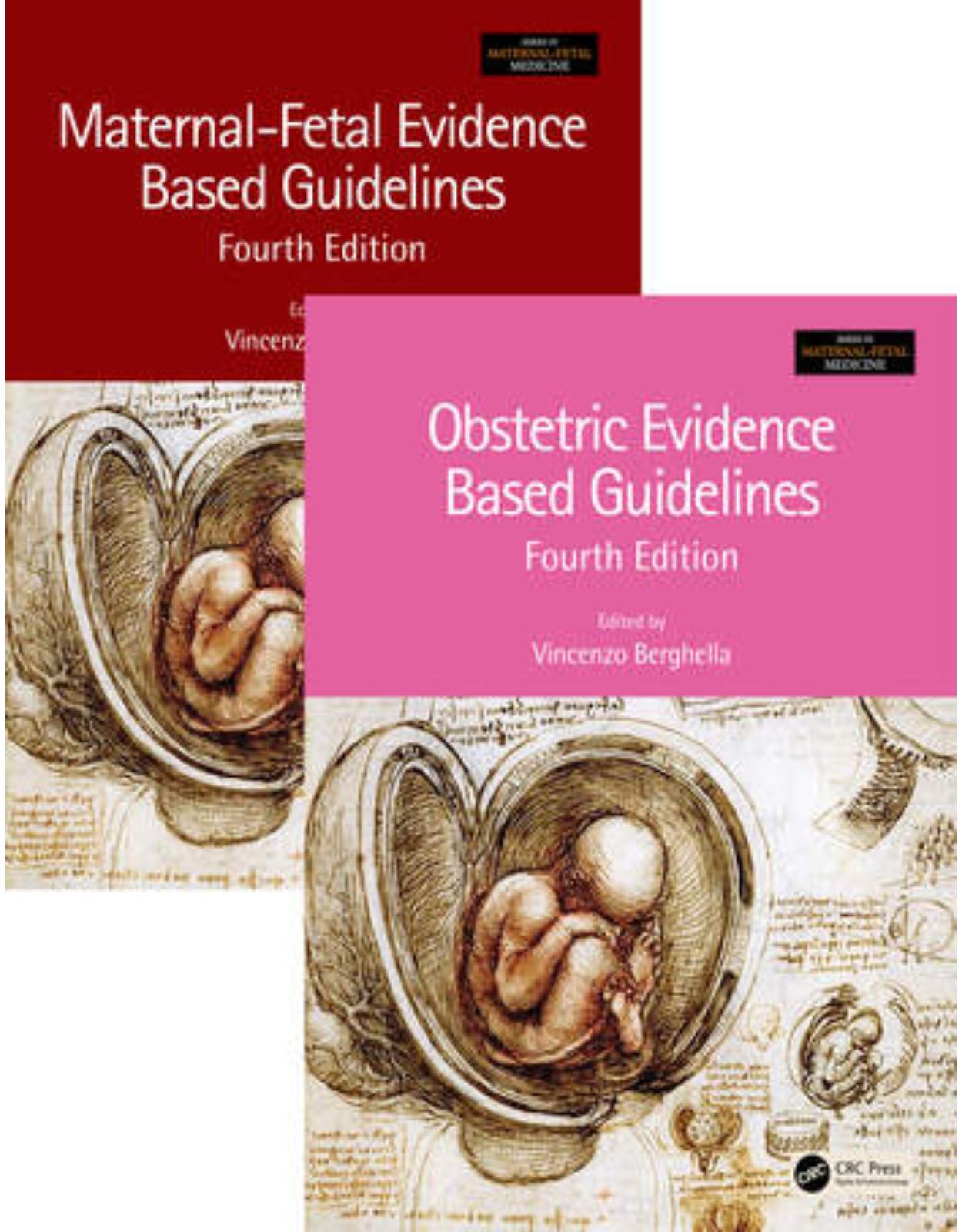
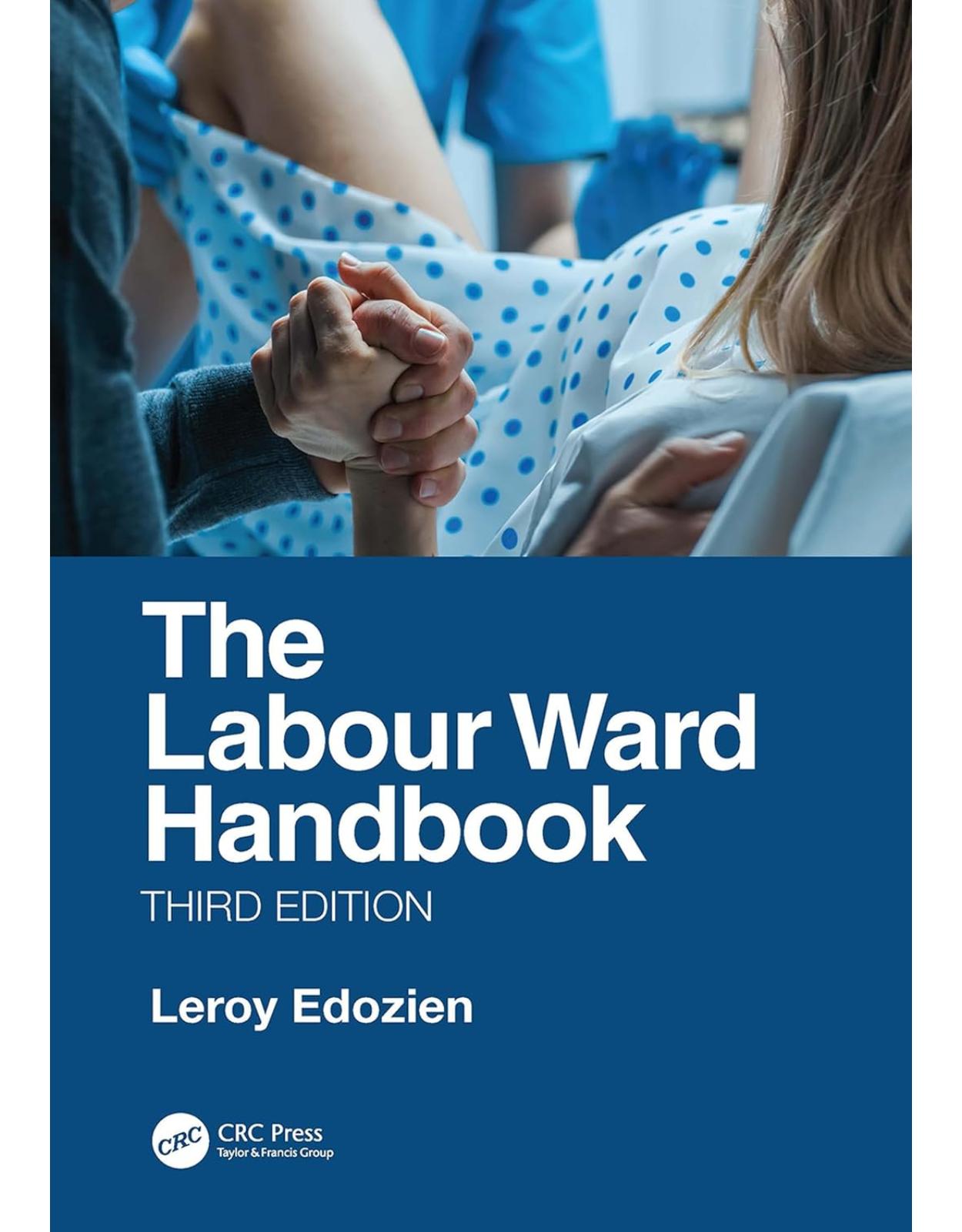
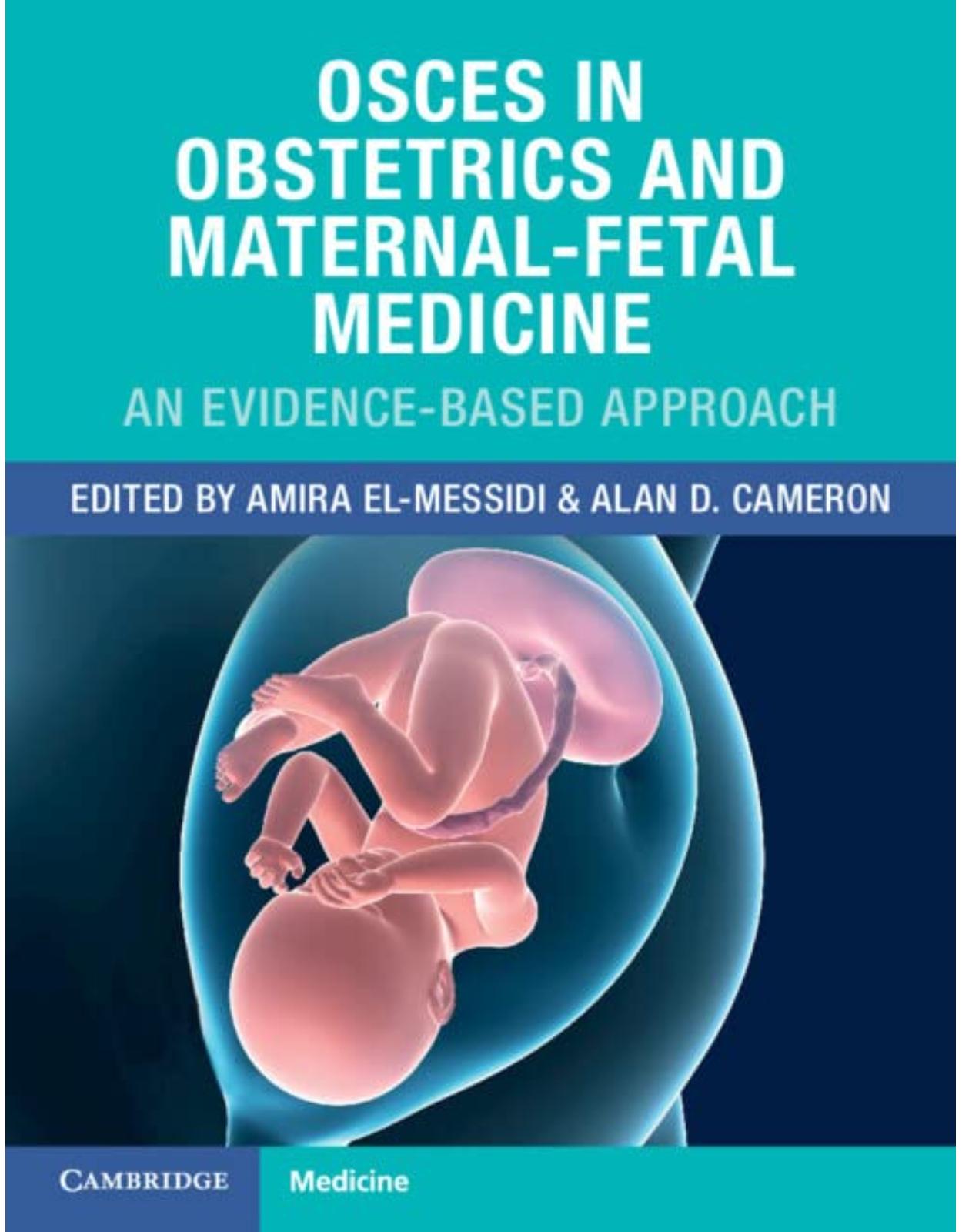
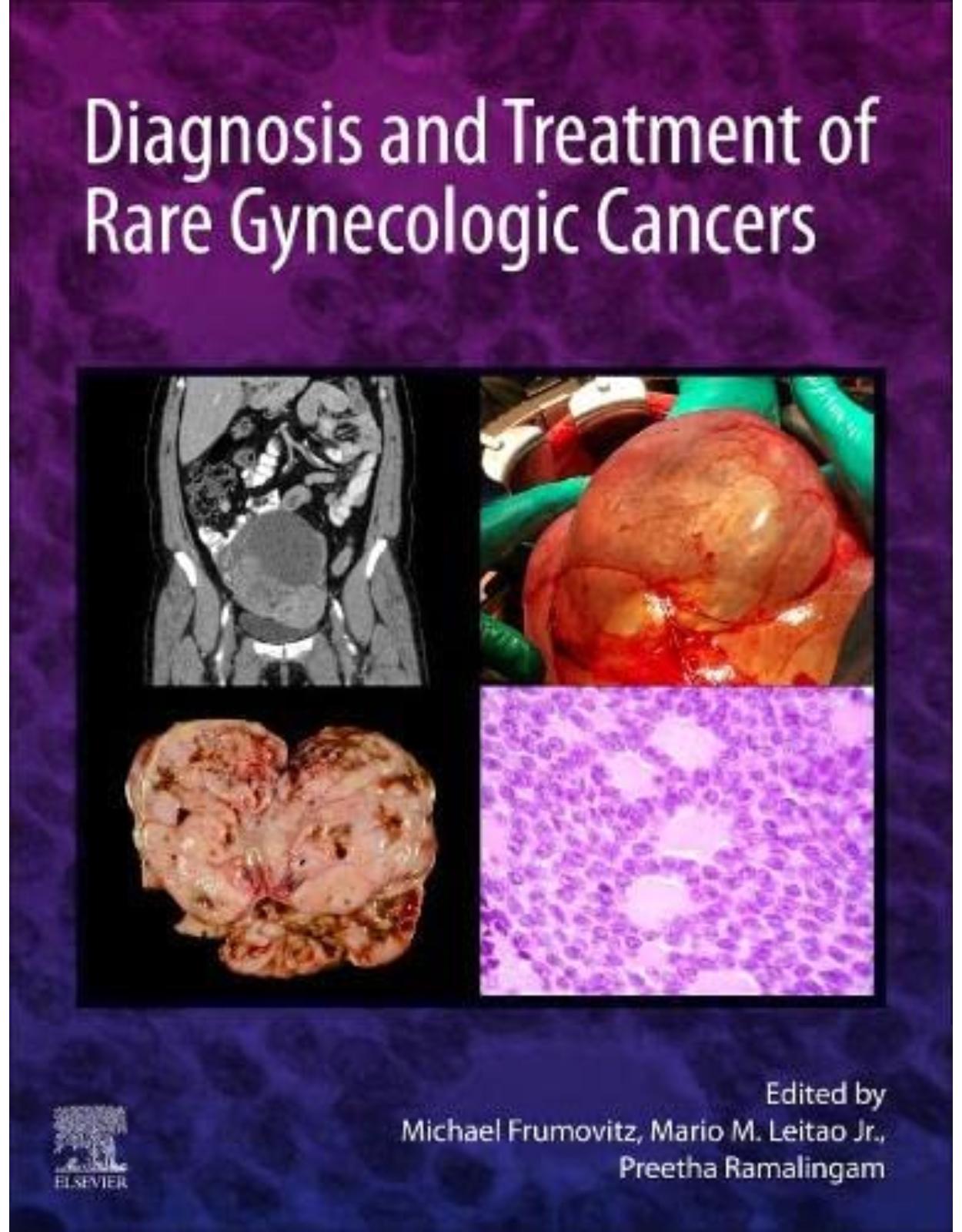
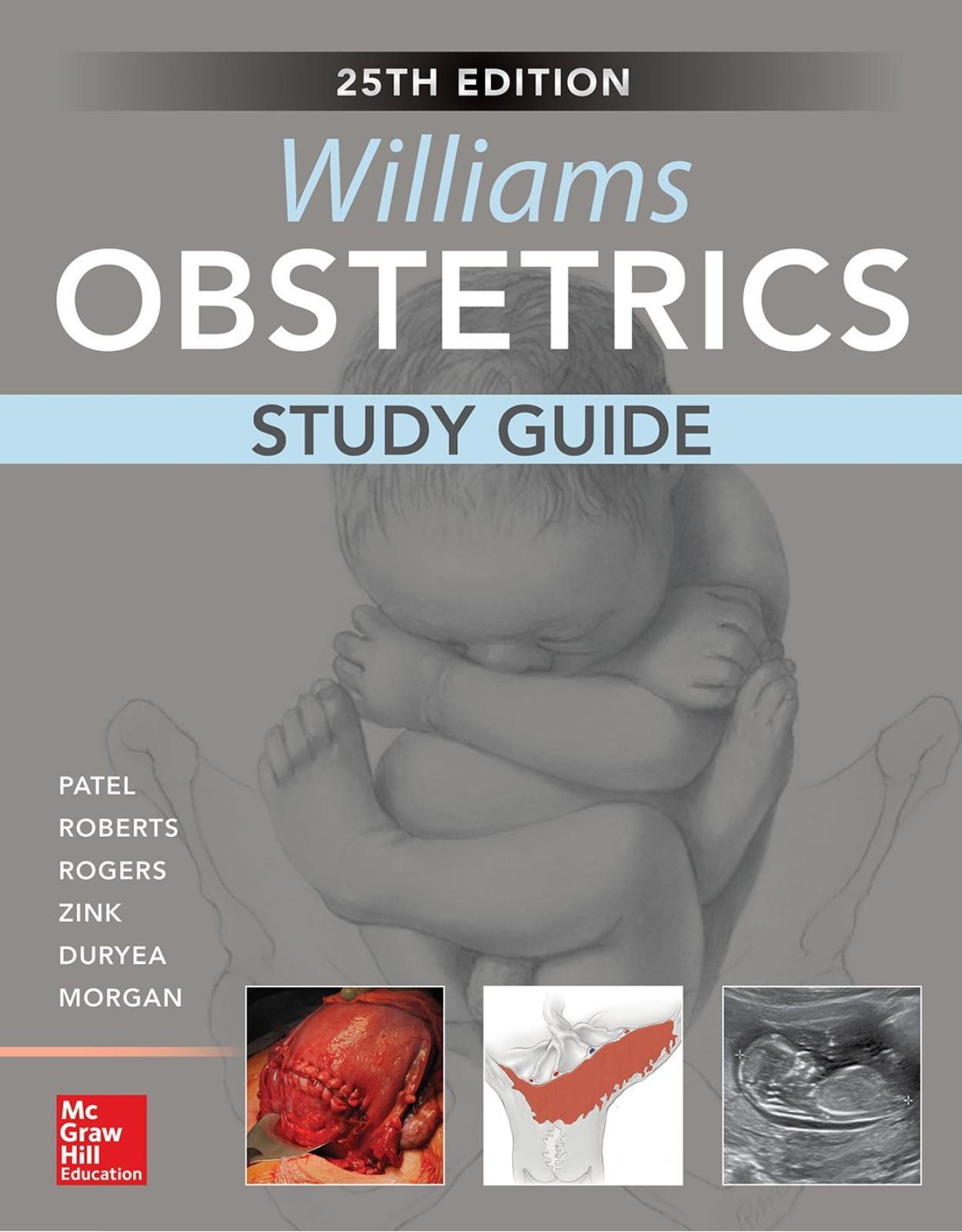
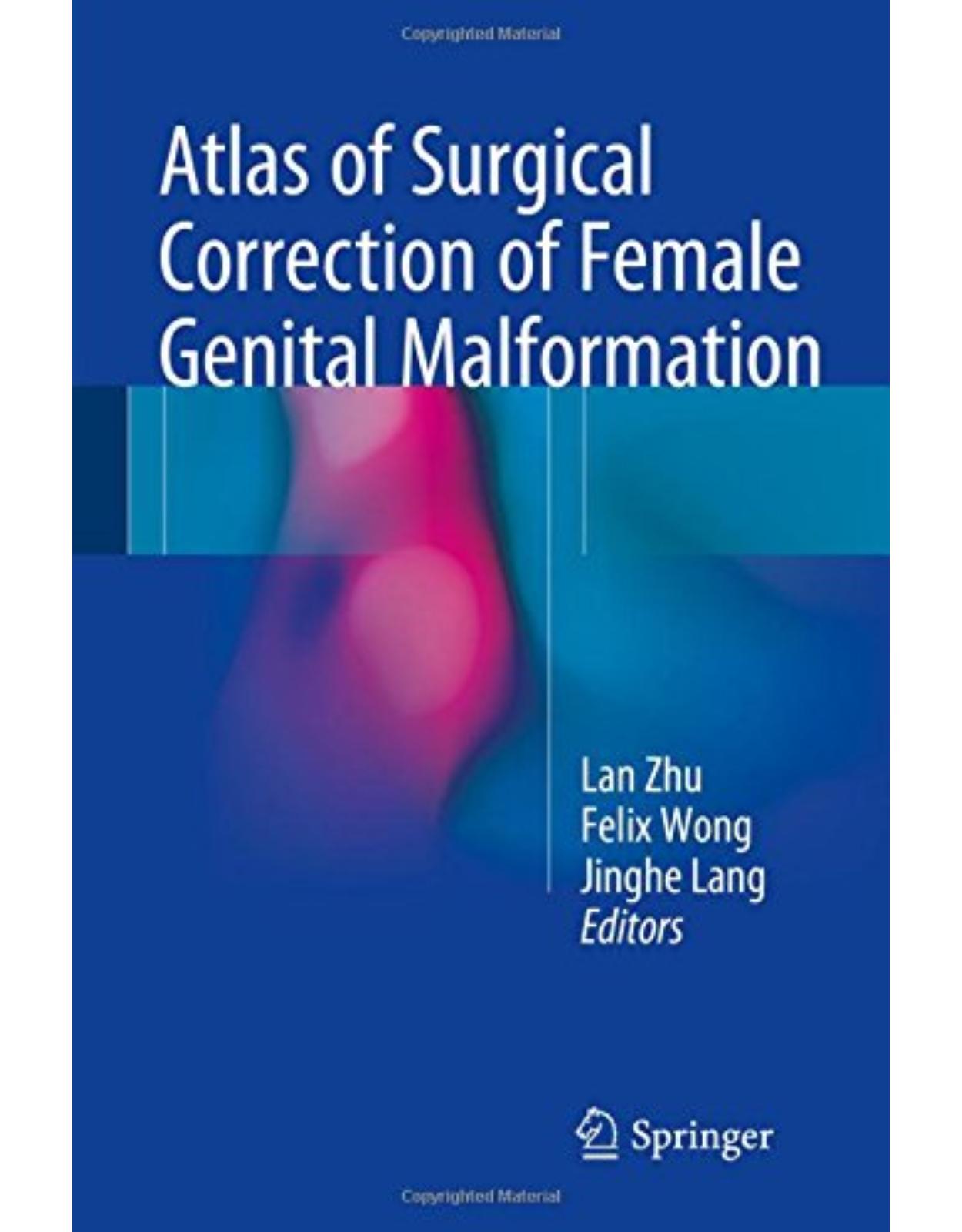
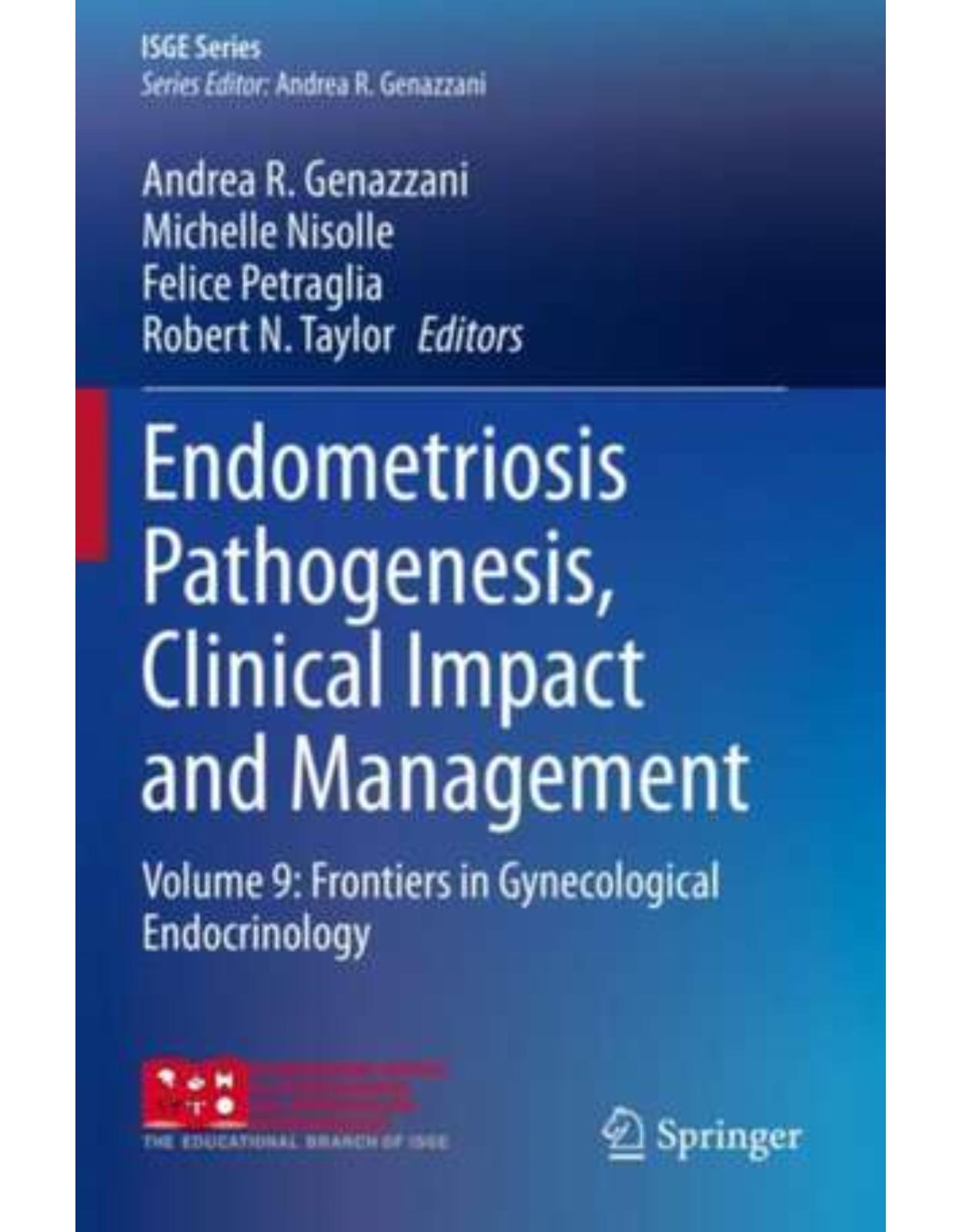
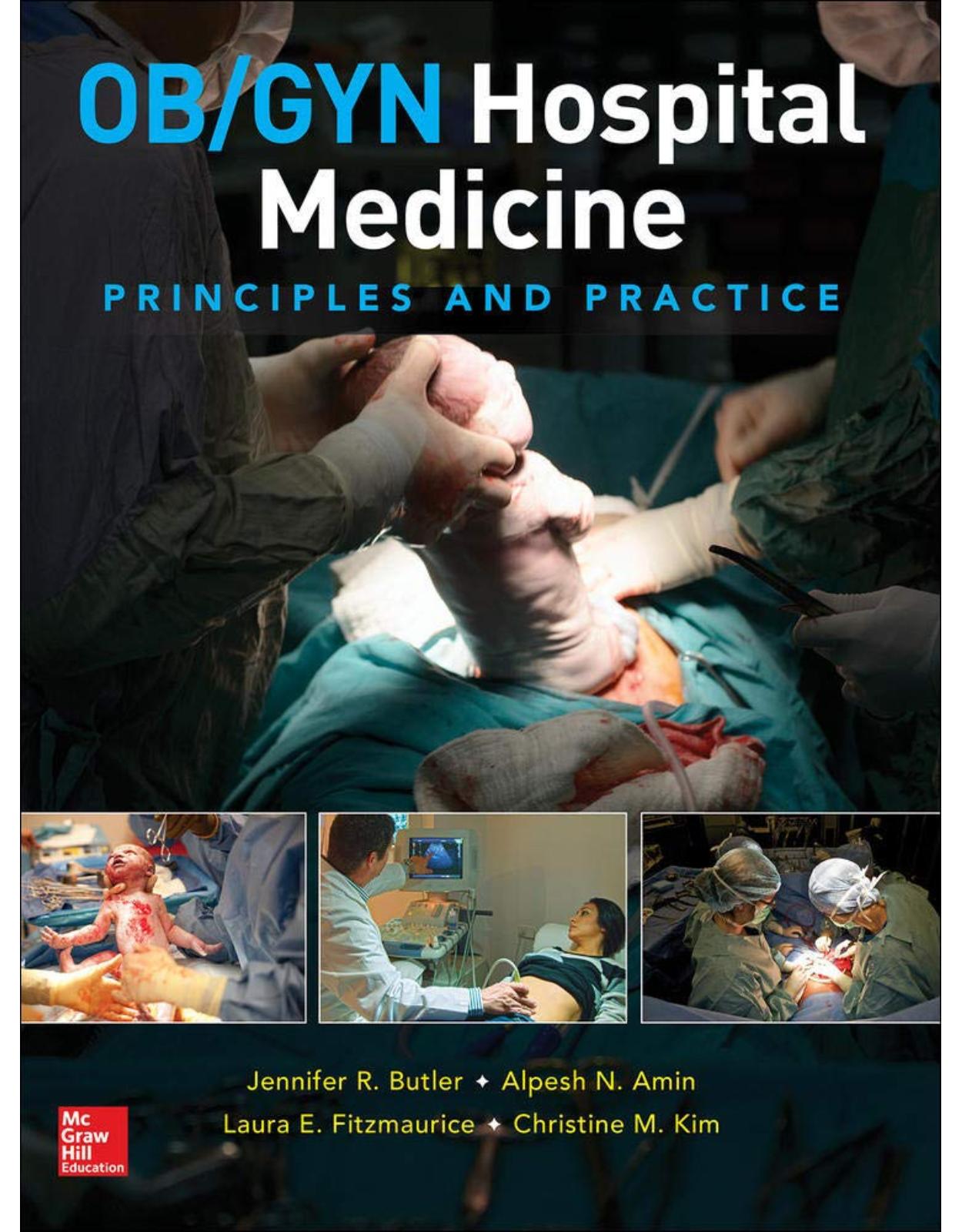
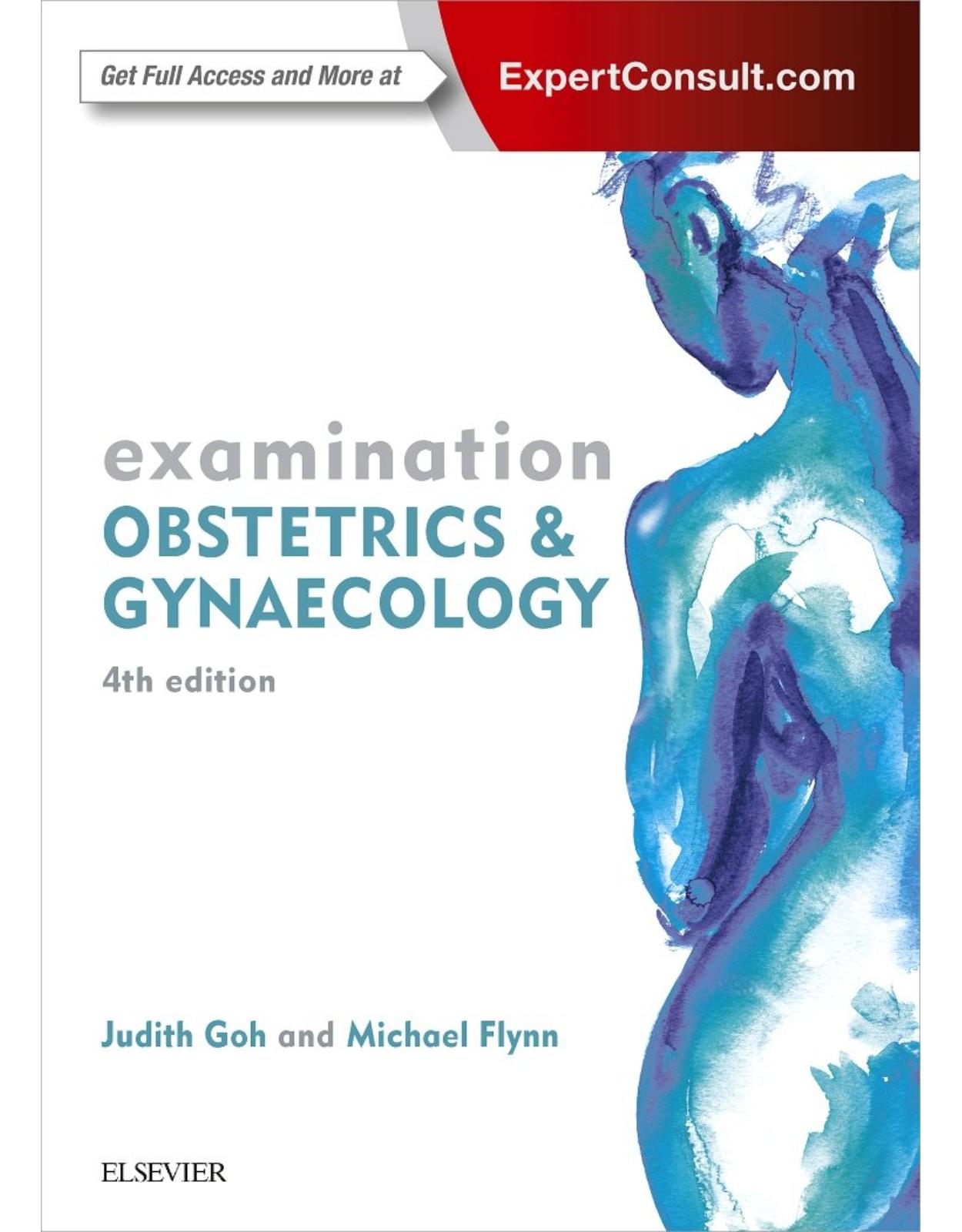
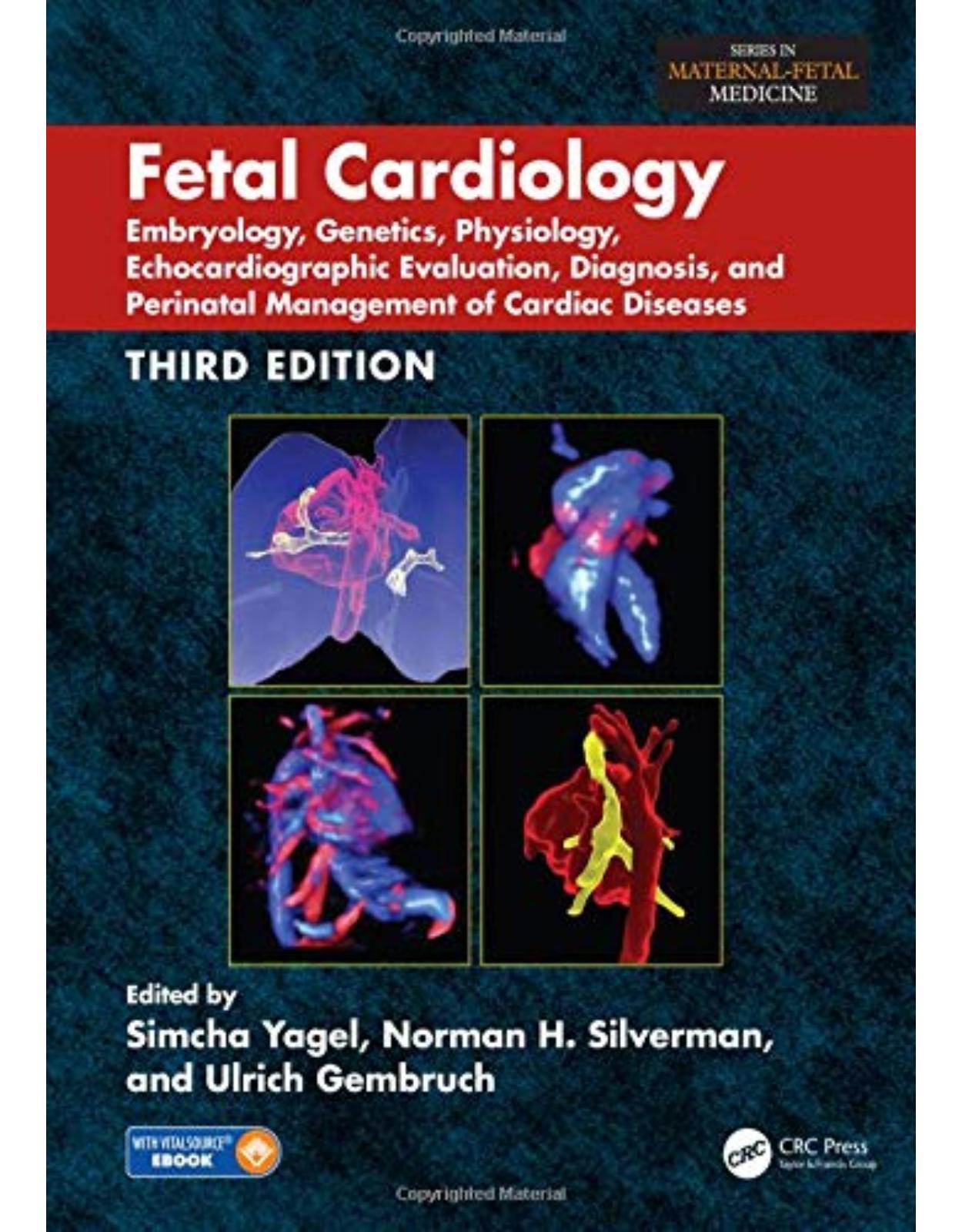


Clientii ebookshop.ro nu au adaugat inca opinii pentru acest produs. Fii primul care adauga o parere, folosind formularul de mai jos.